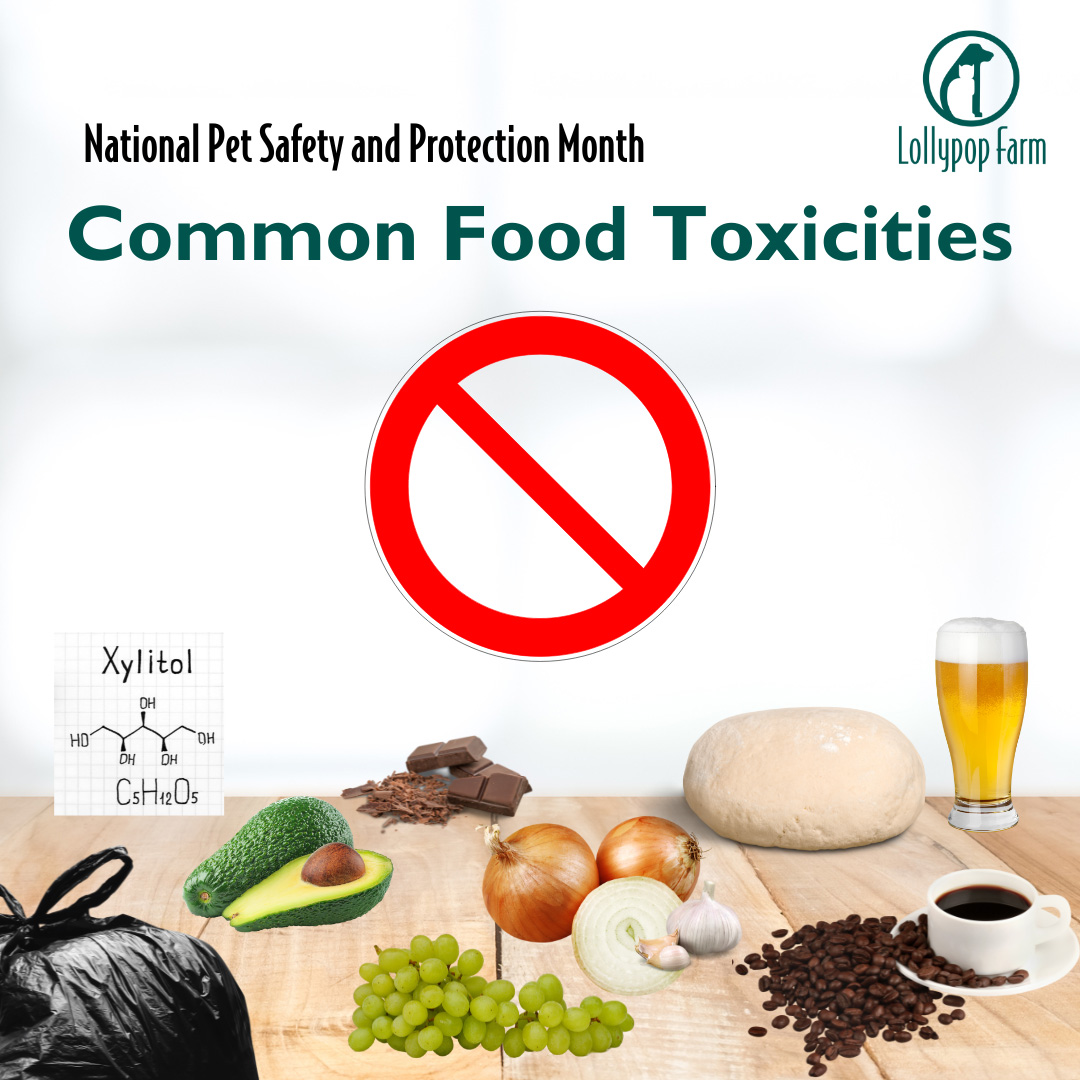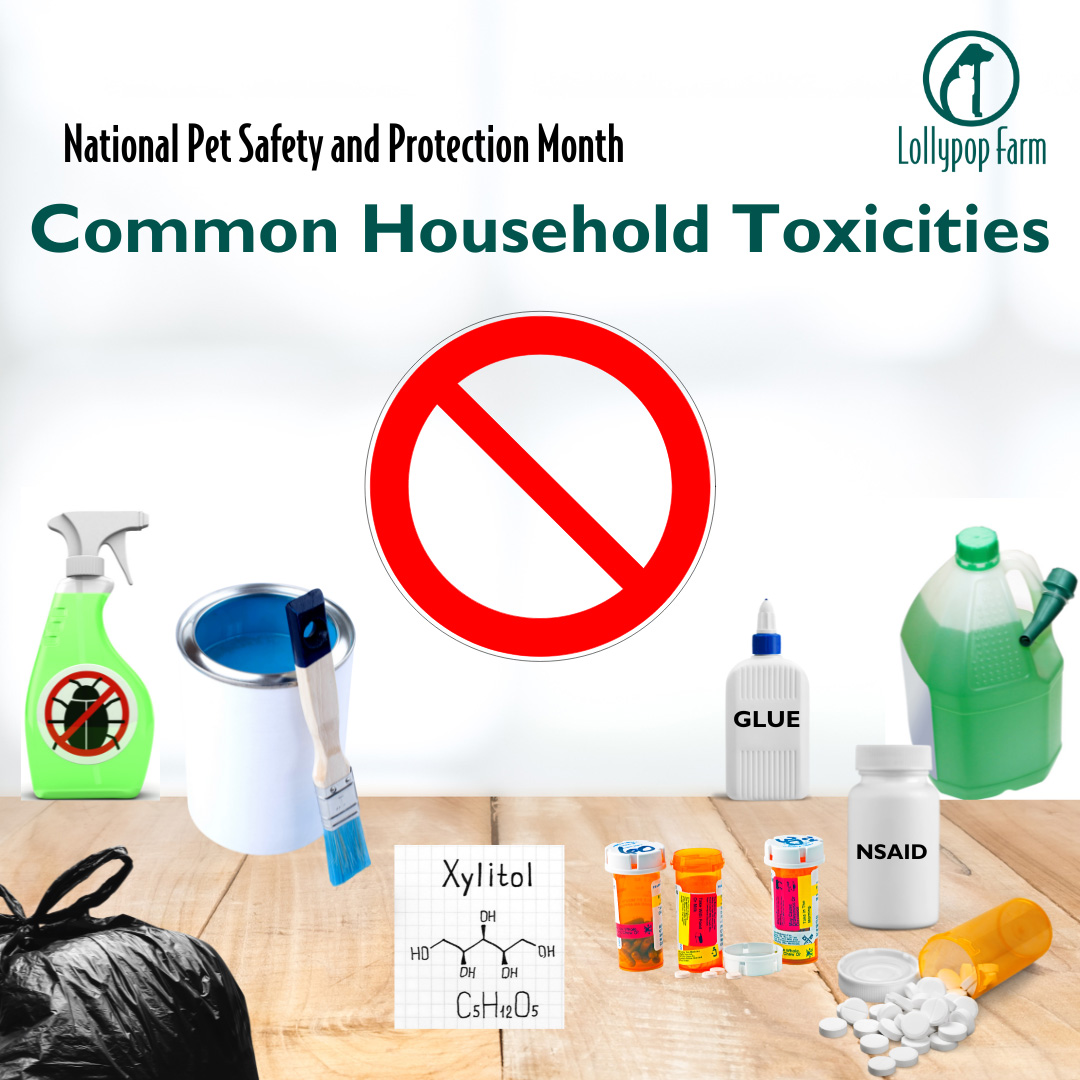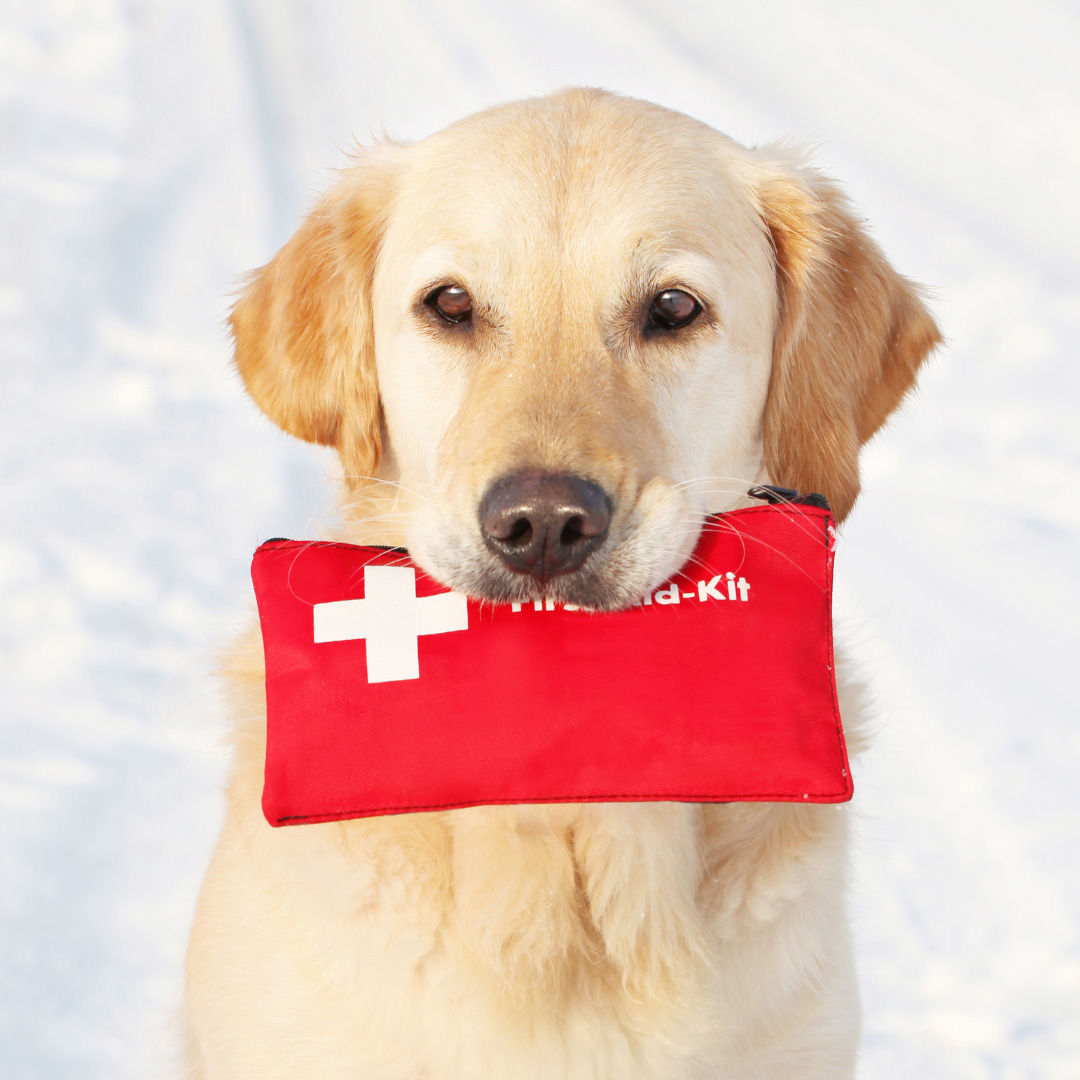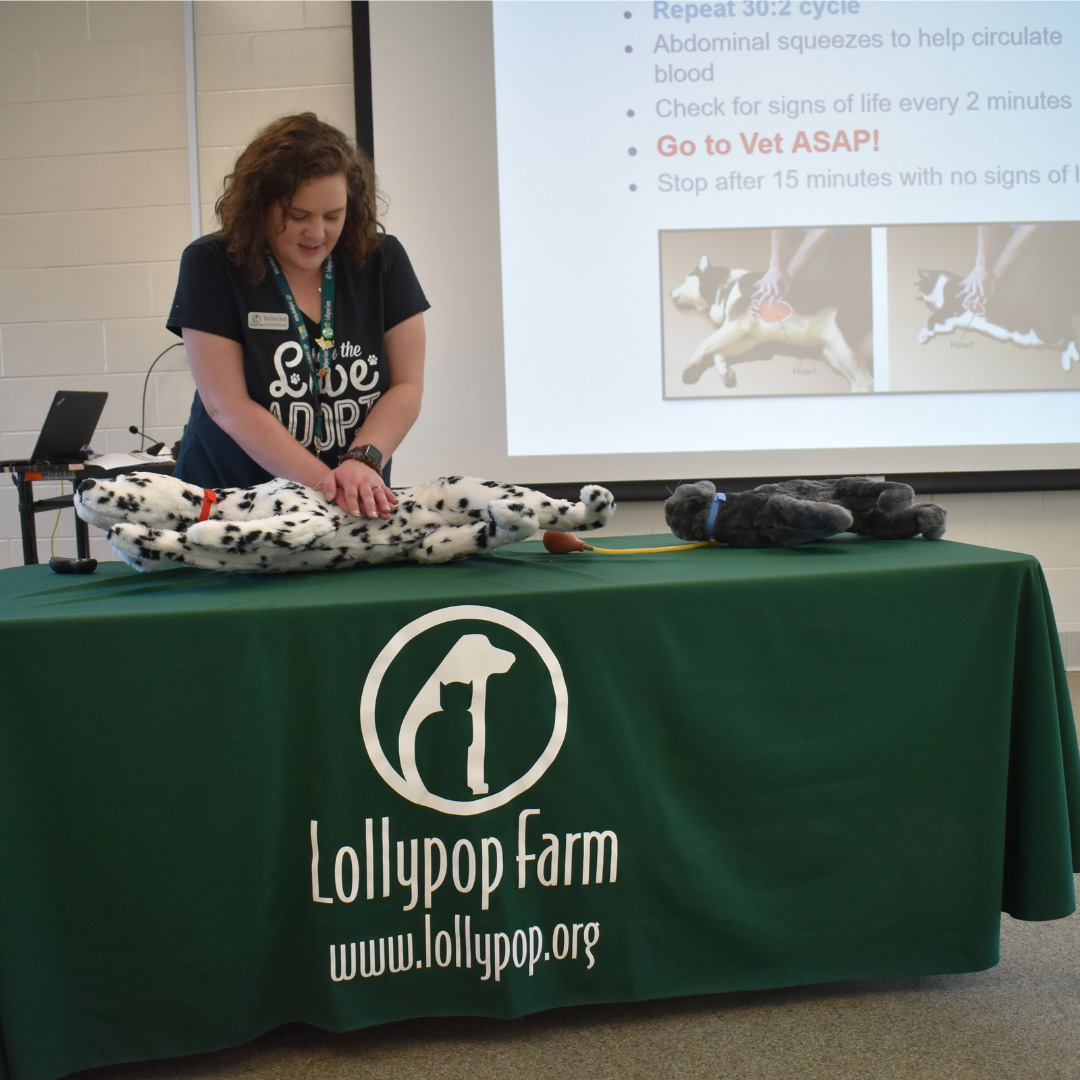Lollypop Farm understands the importance of animals in everyday life, as our pets become family. October is National Animal Safety and Protection Month, a month to bring awareness to the safety and protection of those animals we hold dear.
Safety Reminders for Pets
Establish a relationship with a veterinarian and keep your pet up to date on annual examinations, even for indoor-only pets. Veterinary records of what is normal for your pet can help in the event of a possible future emergency. Keep your veterinarian’s phone number and business hours in a prominent place if you need to contact them. In case of emergency, keep local urgent care, emergency animal hospital, and pet poison control phone numbers readily available. You never know when the need will arise, but you can always be prepared,
Pet toxins are all around us, including foods we commonly eat! An easy way to keep your pet safe is to have a list of toxic items on your refrigerator as a reminder to keep those items away from pets. A pet poison control number like the ASPCA’s Animal Poison Control number is also important to have on hand in case of emergency. Poison control can help identify toxic items and tell you what to do afterward, from watching your pet for issues to quickly getting to an emergency hospital. The ASPCA’s poison control number is <a href=”tel:18884264435″>(888) 426-4435</a>.
The ASPCA website also has comprehensive lists of toxins for pets: www.aspca.org/pet-care/animal-poison-control, but here are a few common items in the lists below. Do you have a dumpster diver? Consider a locking trash can. Keep household items locked in tubs.

Food Items Toxic to Animals
- Chocolate – Upset stomach in small doses, but can cause heart and nervous system issues and even death in larger doses. Darker chocolates cause more severe symptoms.
- Xylitol (an artificial sweetener and sugar substitute) – Liver failure, hypoglycemia (low blood sugar), and possible death. Animals who ingest xylitol have symptoms very soon after ingestion, and emergency care is often necessary.
- Avocados – Vomiting and diarrhea. Pits can also cause blockages.
- Coffee, especially grounds – causes vomiting and diarrhea, or possible heart and nervous system issues due to the caffeine.
- Garlic/Onion – Damages the blood cells and causes anemia if large amounts are ingested.
- Grapes and Raisins – Can cause kidney failure, but the exact reason is unknown so there is no toxic dose, meaning any amount can be potentially harmful.
- Alcohol – Small amounts may lead to intoxication, but coma or death is possible in large quantities.
- Yeast doughs like bread dough – Yeast doughs expand within the stomach making bloat or the twisting of the stomach more likely. The uncooked dough will also go through the fermentation process, which produces carbon dioxide and alcohol, resulting in alcohol poisoning. Extreme cases can also cause seizures and respiratory failure.
- Moldy food – Can cause a simple upset stomach to neurologic symptoms such as seizures and increased body temperature.

Household Items Toxic to Animals
- Antifreeze – Vomiting, lethargy, leading to kidney failure and possible death. Antifreeze can be toxic from very small amounts ingested.
- Rodent Block or Poisons – Different types of rodent blocks have different effects, from severe kidney failure, preventing blood from clotting to organ failure and death. Knowing the type of rat poison ingested is essential to your pet’s care in an emergency.
- Medicines Intended for People – This entirely depends on the medication ingested, so contacting poison control is advised.
- Ice Melting Products – Some ice melts are non-toxic, while others may contain ingredients that may cause vomiting, diarrhea, or other issues.
- Fertilizers – This is dependent on the type of fertilizer used. Issues can range from an upset stomach to food bloat.
- Compost – Molding and decaying matter contain mycotoxins, which can cause drooling and vomiting to serious neurologic signs such as seizures.
- Cocoa Mulch – Has traces of cocoa, which can cause the same issues as chocolate.
- Super Glue and Adhesives – Toxicity depends on the type of glue, but some glues such as gorilla glue can expand in the stomach and cause blockages.
- Batteries – Not only can they cause blockages, but the acid within a battery is caustic and can essentially burn the lining of the mouth, esophagus, and stomach.
Plants Toxic to Animals
- Mushrooms in Your Yard – Can cause a variety of issues depending on the mushroom, from upset stomach and kidney failure.
- Lilies – Especially toxic to cats and cause kidney failure. Only a small amount needs to be ingested to be toxic.
- Azaleas – Vomiting and diarrhea to possible cardiac failure in dogs, cats, and horses.
- Tulips – Vomiting and diarrhea, with the highest amount of toxin found in the bulb.
- Chrysanthemum – Vomiting, diarrhea, incoordination, and neurologic issues.
- Sago Palm – Vomiting and increased thirst, liver failure, bruising and possible death.
- Oleander – Drooling and diarrhea, to possible death.
Since there are such a wide variety of plants that can cause a variety of symptoms in pets, it is best to look up the specific plant you want to bring into the house or plant in the yard. The ASPCA’s website is also a great resource for plant toxicity information: www.aspca.org/pet-care/animal-poison-control
If you are concerned your pet has ingested something they shouldn’t have, call poison control and your veterinarian. Poison control will guide you on the next steps to make sure your pet is happy and healthy.

First Aid Items to Keep at Home
Keeping a first aid kit is a great idea for any home, but there are a few things you might want to add with your pet in mind. Some places such as pet stores even have first aid kits specifically designed for pets!
Tweezers are great to keep on hand when you need to remove a tick or splinter. Some even have magnifying glasses so you can better see the item you need to remove.
Since regular bandages don’t stick to an animal’s fur, non-stick gauze, bandage wraps, or self-stick bandages are the best options. Depending upon the size and severity of the wound, be sure to check with your veterinarian in case stitches are needed.
Moving an injured pet is often difficult, especially because animals in pain may react by trying to keep you away or biting. Large blankets are a good way to help transport an animal that can’t walk, but they can also be used as a barrier between you and your pet while they are injured and reacting out of pain. Can you easily access a carrier or crate for your pet? This can also help in emergency situations where you need to move your pet quickly.
Hydrogen Peroxide is helpful to keep on hand for when a dog has ingested something it shouldn’t have like chocolate. Before doing this, consult your veterinarian on the proper amount because too much can cause an upset stomach. In some cases, it is also NOT advised to use hydrogen peroxide because vomiting up certain substances can cause more harm than good. Always call poison control or your veterinarian before using hydrogen peroxide and if your pet has ingested something it shouldn’t have.
Does your pet travel with you by car? Think about adding a first aid kit in your car with pet-related items as well! For summertime, always have water on hand. Make sure you have blankets or boots to keep your pet warm in the winter.
Join our Pet First Aid and CPR classes to learn more pet first aid tips. Sign up for a specific date and time at www.lollypop.org/calendar.
Emergency Preparedness
Having a plan is important for disasters. While most of us don’t live in the paths of hurricanes or tornadoes, emergencies can happen, and being prepared is essential.
Fire safety is important no matter where you live and for every member of the family. Keep carriers or leashes by the door if you need to quickly get out of the house. Have a plan of where your family will meet outside. We know it can be difficult, but do not go back into a burning house for any reason. Firefighters are the only people who should enter a burning building. Fire safety stickers can be placed on the doors to your home, alert firefighters to the number of people and animals inside your home. This simple sticker can help a firefighter save your family, including your pets.
A good idea for cases of bad weather, fire, or other types of disasters is to have your pets’ most needed items in a safe and available place. Important documents such as rabies certificates, microchip information, and current pictures of your pet are easy things to keep track of and can help in numerous situations such as your pet getting lost or if you need to evacuate your home.
If you had to evacuate today, how long would it take you to get your AND your pets’ items together? Why not put a few items into a tote for your pets now? A first aid kit, towels, a leash, a small bag of their food, new toys, a few weeks of their medications, and their veterinary information with records can all be kept in together in case of an emergency. Just be sure to switch out the medications and food as needed.
Did you know that Lollypop Farm has a team of employees committed to helping in emergency situations? The Animal Emergency Response Team helps in cases of disasters, large intakes by our Humane Law Enforcement Team, and large-scale community need. The team is trained in disaster preparedness, animal handling, and much more.

Pet First Aid and CPR
Did you know that Lollypop Farm offers Pet First Aid and CPR classes? These classes are a great way to learn what to do in an emergency situation and how to keep your pet safe. Classes are hands-on, including a CPR test dummy dog to practice CPR on. The classes also go over other safety measures, including a guide to items that are toxic to pets. Be sure to view available classes and sign up on the events page.
While October may be National Animal Safety and Protection Month, we hope the information and tips above can help keep your pets safe all year!



